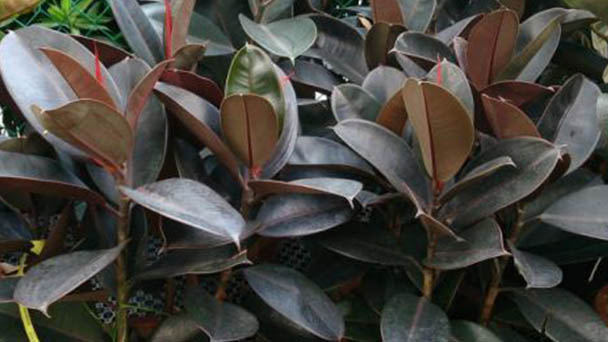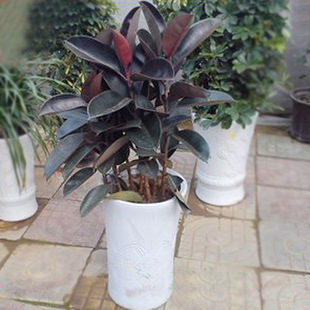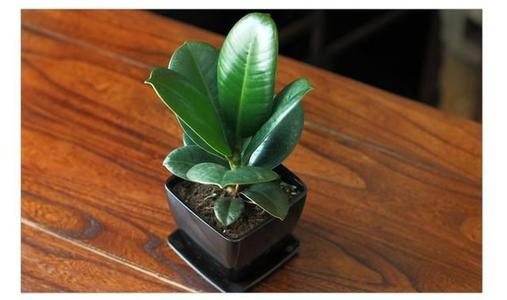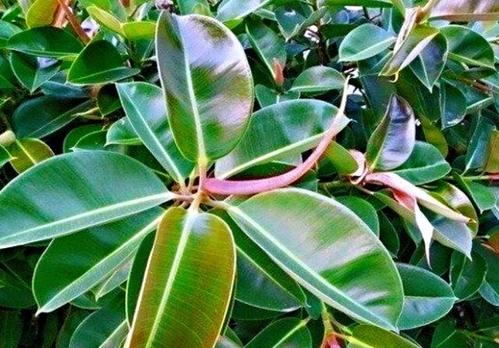Rubber fig care guide
Written by Maggie
Oct 29 2021

A Rubber fig plant is also known as a Ficus elastica. These large trees can grow up to 50 feet (15 m.) tall. When learning how to care for a Rubber fig plant, there are a few key things to remember, but Rubber fig care isn’t as difficult as we might think.

Rubber fig is one of the best trees for pots
How to care for Rubber fig leaves appearing macular
There are many causes of Rubber fig leaves appearing macular. If it is to take off the fat for a long time, it should be dealt with promptly in the basin, gradually increasing the effects of rotten. When the temperature is too high, move the plants into a well-ventilated shade. Spray water to cool the heat. If root rot is the cause, change the soil in time. The root system should be disinfected before changing soil, and then put on the basin, and do a good job of prevention of pests and diseases.
1. Add fertilizer for Rubber fig
Rubber fig likes to grow in nutrient-rich soil. If it is for a long time to take off fat, or too little fertilizer, it can cause internal plant nutrition deficiency, poor blade growth, yellowing phenomenon. At this time, it should be handled timely in the basin. After changing the pot, liquid fertilizer or compound flower fertilizer was gradually applied to provide nutrients needed for plant growth.
2. Cooling treatment for Rubber fig
Rubber fig likes to grow in a warm environment, allowing light exposure. If we put plants in the high temperature, it is easy to cause the young leaf tip to appear brown, so there will be a lot of spots. At that time the plants should be moved to the shady and cool place with good ventilation, to solve the heat into the surrounding water moisturizing, in order to achieve the purpose of cooling.
3. Change basins for Rubber fig
When there are many yellow spots on Rubber fig leaves for no reason, most of them are caused by root rot. So it is necessary to change the soil in time, shake out the old soil, clean the rotten roots, soak them in disinfectant for about 10 minutes, and then replant them with soil.
4. Rubber fig disease prevention
Frequent diseases on rubber fig are mainly caused by leaf spot disease. In the onset period, there will be many small spots on the leaves, which will erode the leaves over a long period of time, resulting in the phenomenon of death and wilt. At this time, the diseased leaves should be removed, sulfur powder should be applied to the wound for disinfection, and the corresponding carbendazim solution should be used for spraying prevention.

Rubber Fig - Most Common House Plant
How to care for Rubber fig leaves softening
When the leaf of Rubber fig becomes soft and saggy, it should be disposed of timely. If the temperature is too low, should be carried out light heating, or moved into the indoor maintenance. If water too little, water in time, and then lose soil. If the roots rot, timely replace the soi. If it is caused by the wind, you should pay attention to wind in early spring and winter, to adapt to the environment before entering the room.
1. Heating treatment of Rubber fig
The weather is too cold is one of the reasons of Rubber fig leaves soft prolapse. Rubber fig is a tropical plant, grows faster in warm environments. If the growth of the environment temperature is very low, for a long time frostbite will root, the leaf will follow soft prolapse, looks no vitality, the plant should be put into the greenhouse, or for temperature lights to fill.
2. Add moisture for Rubber fig
Rubber fig have certain ability to drought, but at the time of peak season to ensure that the water is enough, otherwise easily lead to poor and growth, appear the phenomenon of soft prolapse. At this time it should be watered once and apply a timely vehicle processing again. When the weather is very hot to do foliar spraying 2 ~ 3 times a day, keeping moist is the best.
3. Soil replacement treatment of Rubber fig
Rubber fig has a certain drought resistance ability. If it is rained directly in rainy weather and there is no drainage treatment afterwards, rotten roots are likely to cause branches and leaves to become soft and drooping. It is time to replace the rotten roots with fresh soil.
4, pay attention to wind
Rubber fig growth is more sensitive to changes in the environment. If in the winter or early spring, it often has the cold wind blowing, which will easily cause the branches and leaves to grow poorly, appearing to be a phenomenon of soft prolapse. Early in the spring and winter you should pay attention to wind. Don't rush to home when the weather is very cold, to adapt to the environment and then put it into the interior.

Rubber Fig - one of the best indoor trees
Read Next: Rubber Tree Plant (Rubber Fig) Care & Growing Guide
Latest Updated
- Benefits of Bugleweed - 7 Science-backed Health Benefits
- Bugleweed Dangers & Side Effects - Is It Poisonous?
- How to Plant Evergreen Trees - What You Should Know
- When to Plant Evergreens - Grow Guide for Evergreen Trees
- 12 Wonderful Evergreen Shrubs for Your Garden
- 12 Popular Evergreen Plants with Pictures for Beginners
- When And How To Prune A Lilac Bush Like a Pro
- How to Grow & Care for Lilac Vine (Hardenbergia Violacea)
- Japanese Lilac Tree (Syringa Reticulata) Care & Propagation Guide
- Shumard Oak Pros and Cons - What to Know
Popular Articles
- Winter maintenance of Antirrhinum Majus
- How to Grow Terminalia Mantaly Tree
- How to Grow and Care for Crossostephium Chinense
- How to grow Antirrhinum Majus in spring
- Peristeria Elata (Dove Orchid) Profile: Info & Care Guide
- Underwatered Snake Plant (Sansevieria Trifasciata) - Signs And How To Fix
- How to Care for Brazilian Jasmine Plant (Mandevilla Sanderi)
- How to Grow & Care for Graptopetalum Purple Delight in Summer
- Rosa Chinensis (China Rose): Plant Growing & Care Tips
- How to Care for Baby Sun Rose (Aptenia Cordifolia)